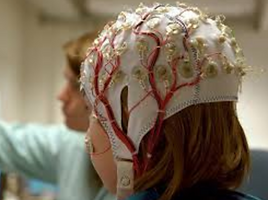Distinguished Lecture
Computational EEG Markers for the Diagnosis and Treatment of Epilepsy By Beth A. Lopour:
Week 3 Distinguished Lecture
By: Lucia Zhang & Alice Garcia
Beth A. Lopour is an Associate Professor in Biomedical Engineering. She started off her education in Mechanical Engineering, and three years into her PhD at UC Berkeley, she took her first Neurology class. This sparked a new curiosity that led Lopour to start studying neurology and epilepsy.
Dr. Lopour now studies epilepsies, which are recurrent, unprovoked seizures (pathologically synchronous electrical activity in brain) that affect around 1% of the world's population. While doctors utilize brain imaging (MRI, PET), genetic testing, clinical EEG recordings to first prescribe treatment for patients, this doesn’t work for everyone. If such anti-seizure medication doesn’t stop a patient’s seizures, epilepsy surgery may be needed. To conduct this surgery, doctors will implant EEG electrodes, wait a few days and capture seizures, then analyze the collected data to hopefully locate and remove the part of the brain that generates seizures. Some examples of this surgery include: hemispherectomy (half the brain is removed) curious callosotomy (the connection between the left and right side of the brain is severed), lobectomy, focal resection. It is easier to fix epilepsy in a child rather than an adult because a child’s brain is more susceptible to change.
While ⅓ of patients who have epilepsy need surgery, around 50% of people who undergo surgery no longer experience seizures. For those who still experience seizures, they often have to take medication for the rest of their lives. Currently, researchers are working to determine what parts of the brain are critical to the occurrences of seizures. Dr. Lopour’s lab specifically utilizes computational techniques to compliment the physicians who study the data of the sparks from the electrodes to help increase the success rate for surgeries among patients.
Visual Review of EEG is Critical for Epilepsy Care
Electroencephalogram (EEG): Medal electrodes are pasted onto the patient’s head to record electrical signals
Doctors look for interictal waveforms in EEG to determine if their patient had a seizure
Epilepsy Specialists can read & interpret up for 24 hours of EEG in ~30 minutes
Closing Advice
-
Actively seek new opportunities; Apply to multiple, don’t give up.
-
Focus on skills and experience; For resumes or applications, explain how your education has given you experience and skills to apply to other fields.
-
Use the NUMB phenomenon to your advantage; You never know unless you try. Lopour explained how she joined the Marching band on top of taking classes. She explained that this was challenging but fulfilling, and it taught her how to manage her time and juggle her school life with extracurriculars, without sacrificing her mental health.


